BYD’s YANGWANG to begin customer delivery of U9 supercar soon
Shanghai (ZXZC)- On August 16, BYD saw its YANGWANG U9 electric supercar model's first vehicle for customer delivery roll off the production line, and announced the deliveries of the U9 will commence in the near future.
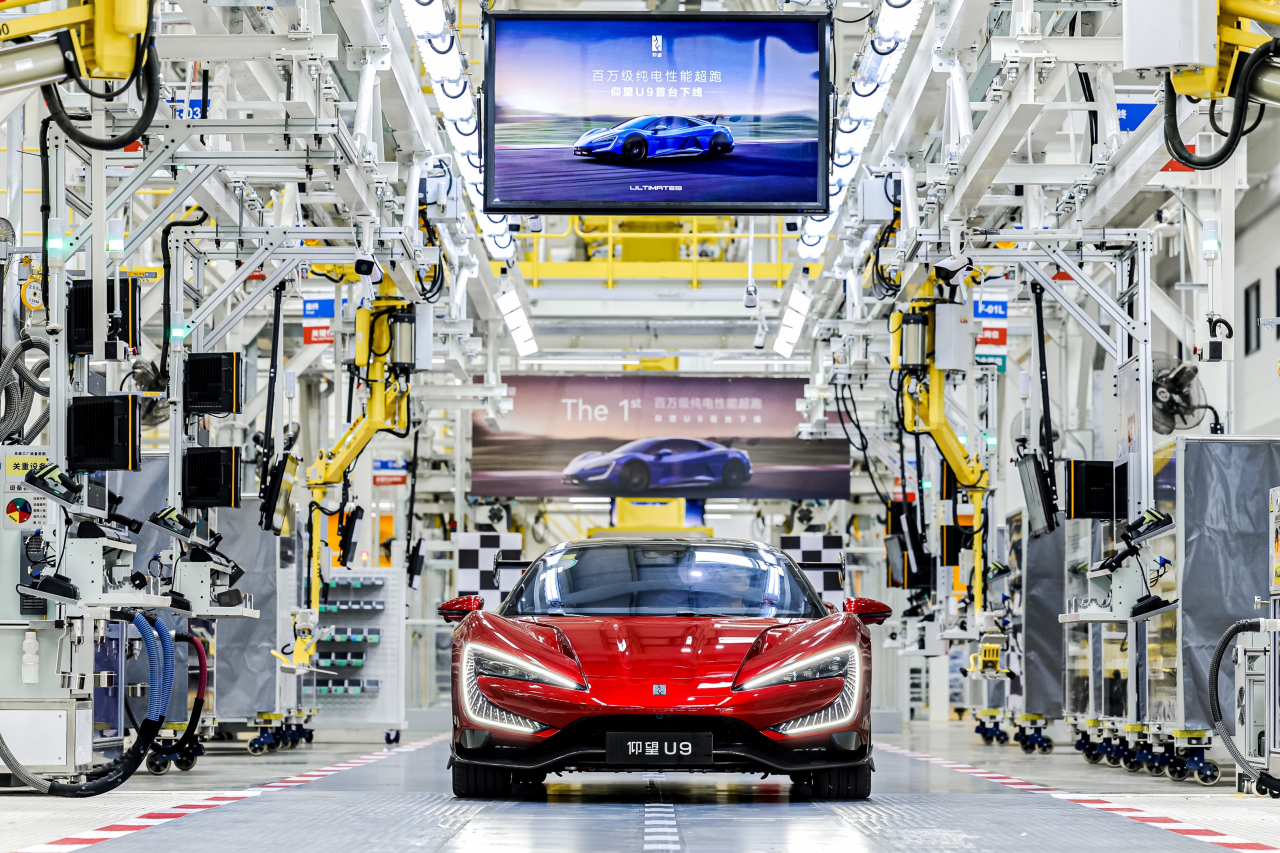
Photo credit: YANGWANG
To meet the exacting production standards of the YANGWANG U9, the company has constructed a dedicated high-standard factory exclusively for its production. This state-of-the-art facility includes specialized areas for the body assembly, general assembly, logistics, and auxiliary functions. Notably, a 2,000-square-meter temperature and humidity-controlled cleanroom has been custom-built for the production of the carbon fiber cabin, ensuring an ultra-high standard environment that guarantees the quality of carbon fiber bonding.
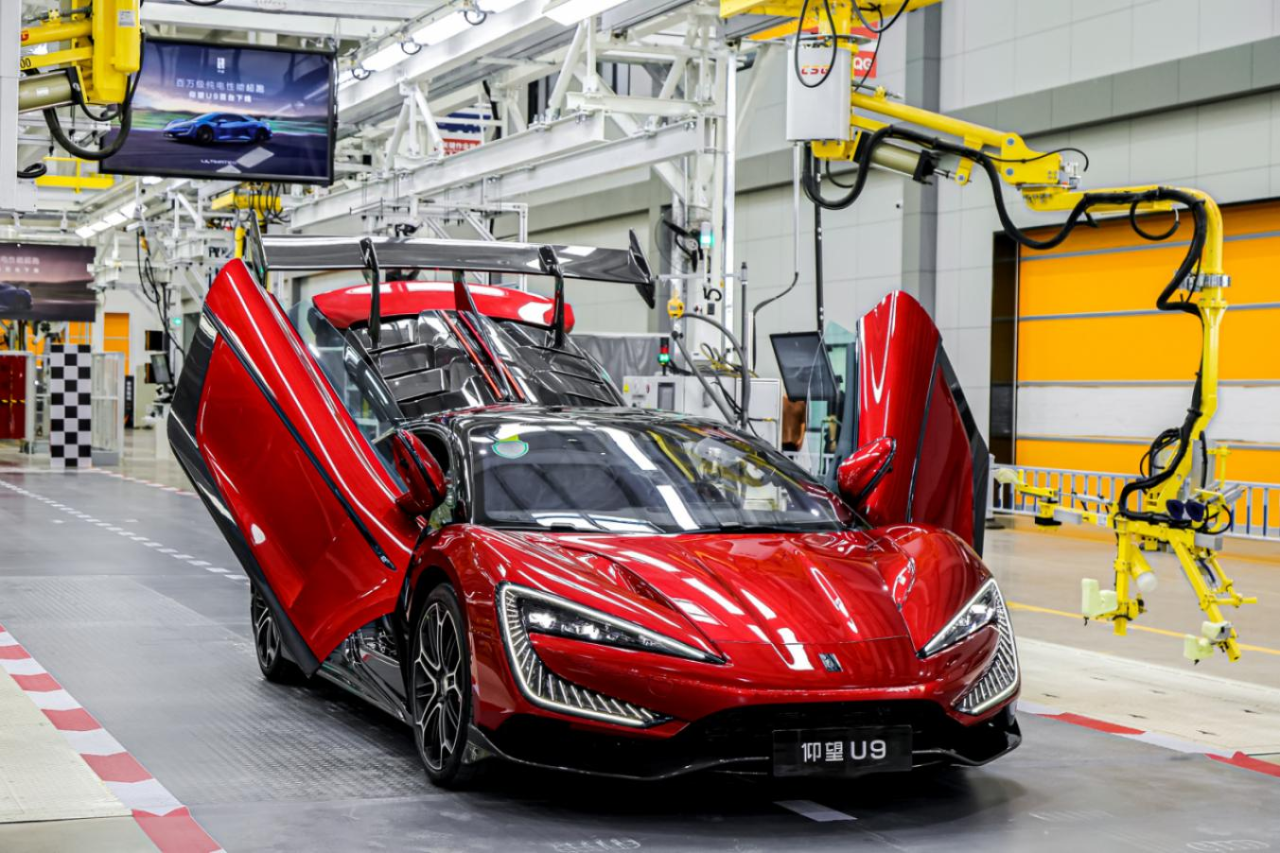
Photo credit: YANGWANG
The YANGWANG U9 is the first mass-produced vehicle model in China to use carbon fiber as a structural component for its body. It features the largest-ever monocoque carbon cabin in the world, constructed with aerospace-grade T700 12K carbon fiber material. This material has a density only one-fifth that of steel but is 5 to 6 times stronger. The vehicle achieves a lightweight coefficient of only 0.95.
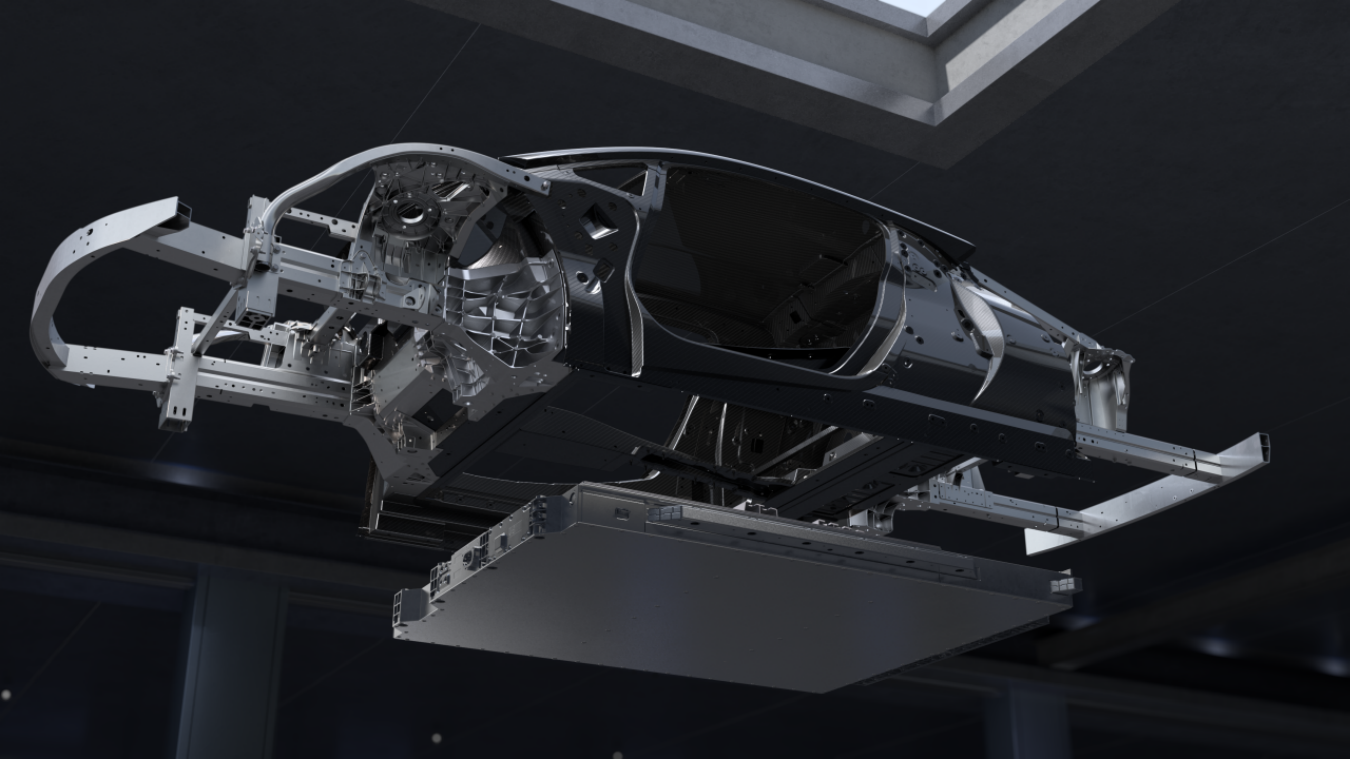
Photo credit: YANGWANG
The U9's super body is assembled in the body area of the factory, comprising three main components: the carbon fiber cabin and the front and rear aluminum frames. The carbon fiber cabin is bonded using a specialized carbon fiber adhesive process within the dedicated cleanroom, where temperature, humidity, and airborne particle levels are measured every two hours using advanced instruments to ensure the environment meets the cleanliness standards of a medical operating room.
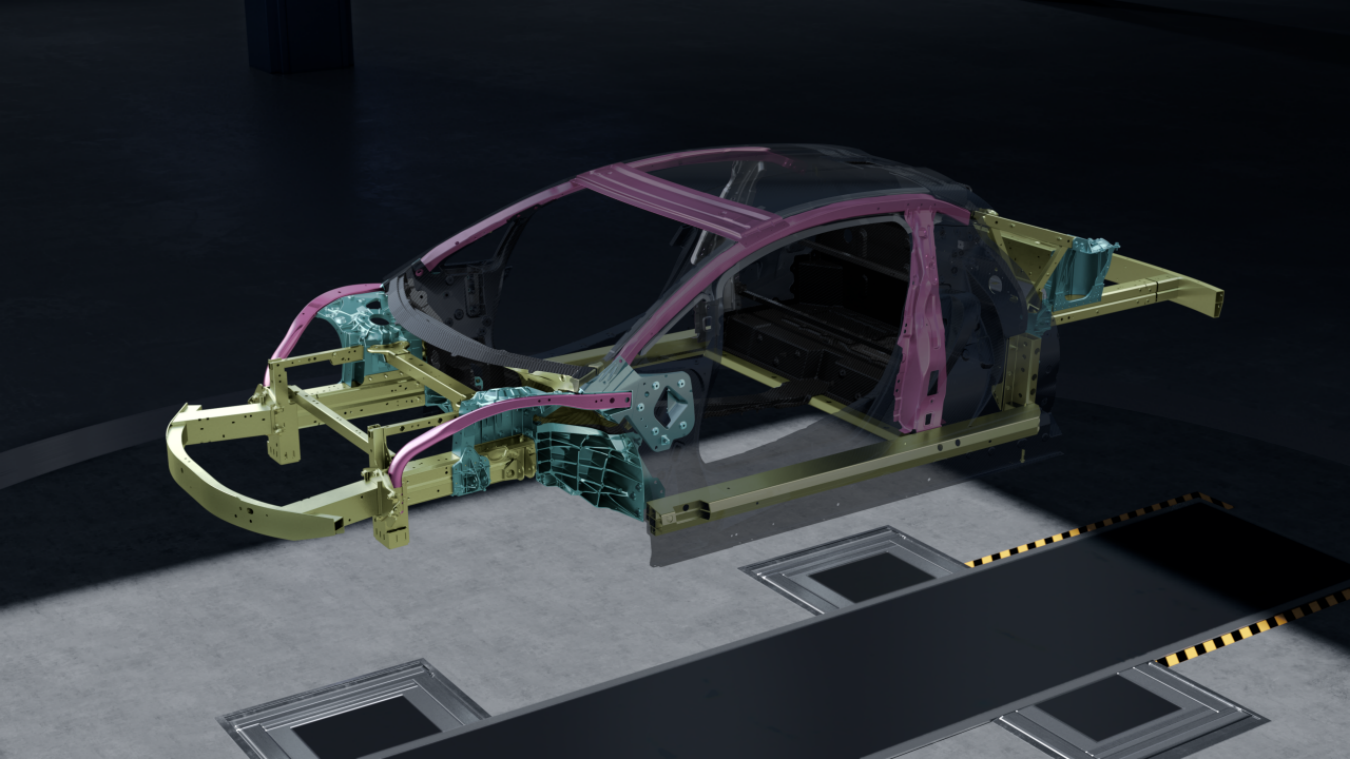
Photo credit: YANGWANG
The front and rear aluminum frames are connected using two advanced techniques: FDS thermal flow drilling and MIG automated arc welding. The riveted structure created by FDS thermal flow drilling offers excellent tensile and shear strength, with superior dynamic load capacity. The MIG automated arc welding process uses inert argon gas as a protective shield to prevent weld oxidation, ensuring high-quality aluminum welds. Finally, at the body assembly station, the three main components—the carbon cabin and the front and rear frames—are precisely aligned using jigs and then assembled into a high-strength body framework through a combination of structural adhesives and bolted connections.
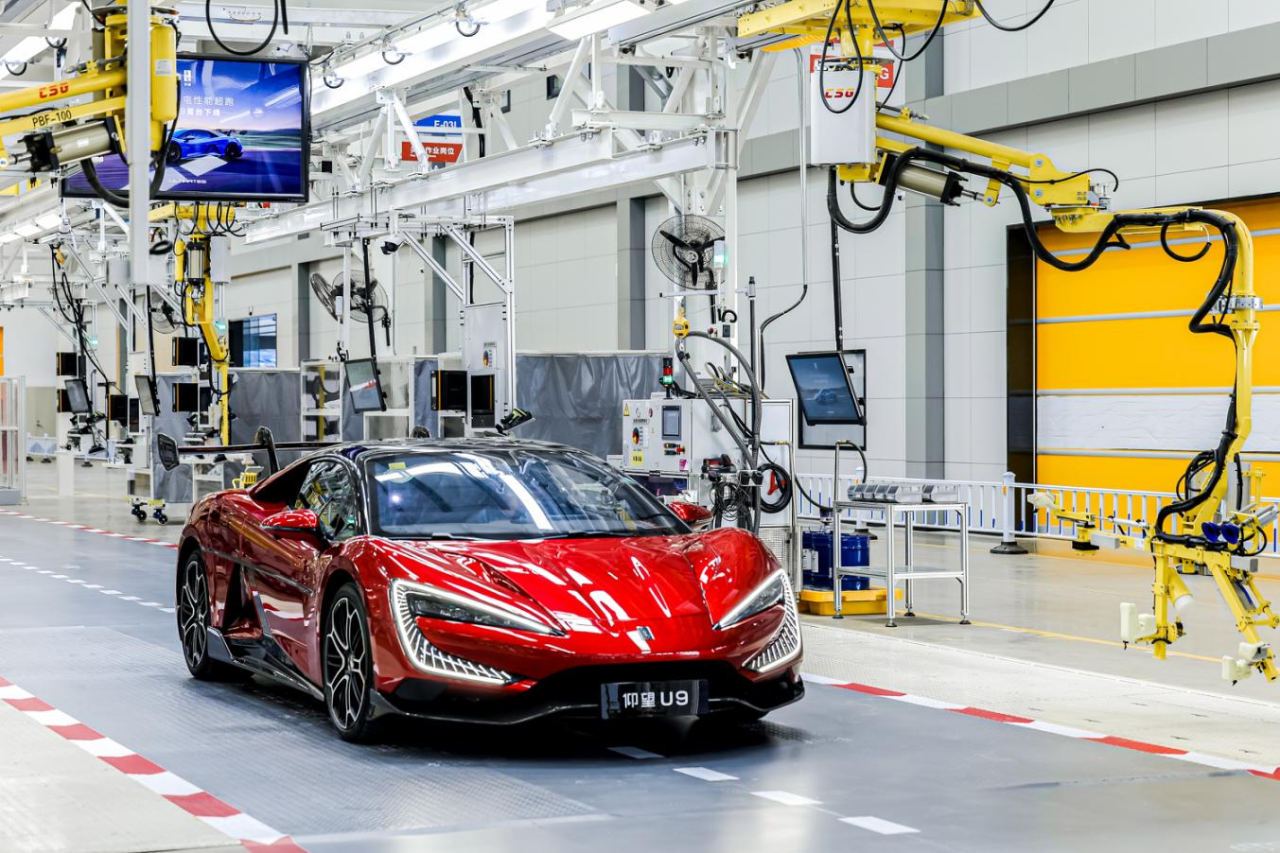
Photo credit: YANGWANG
In the general assembly area, YANGWANG has implemented advanced technologies such as AGV (automated guided vehicle), electric servo tightening systems, and a barcode error-proofing system to ensure precise assembly on the production line, further enhancing the accuracy and reliability of the U9's final assembly.
Regarding safety, YANGWANG said it has conducted rigorous and demanding safety tests that exceed global safety standards. These include a variety of scenarios beyond global standards, such as curb impacts, bottoming out, rollovers, and vehicle-to-vehicle collisions. During the development phase, more than 2,000 virtual simulations were conducted, and over 100 vehicles were subjected to 96 different safety tests.
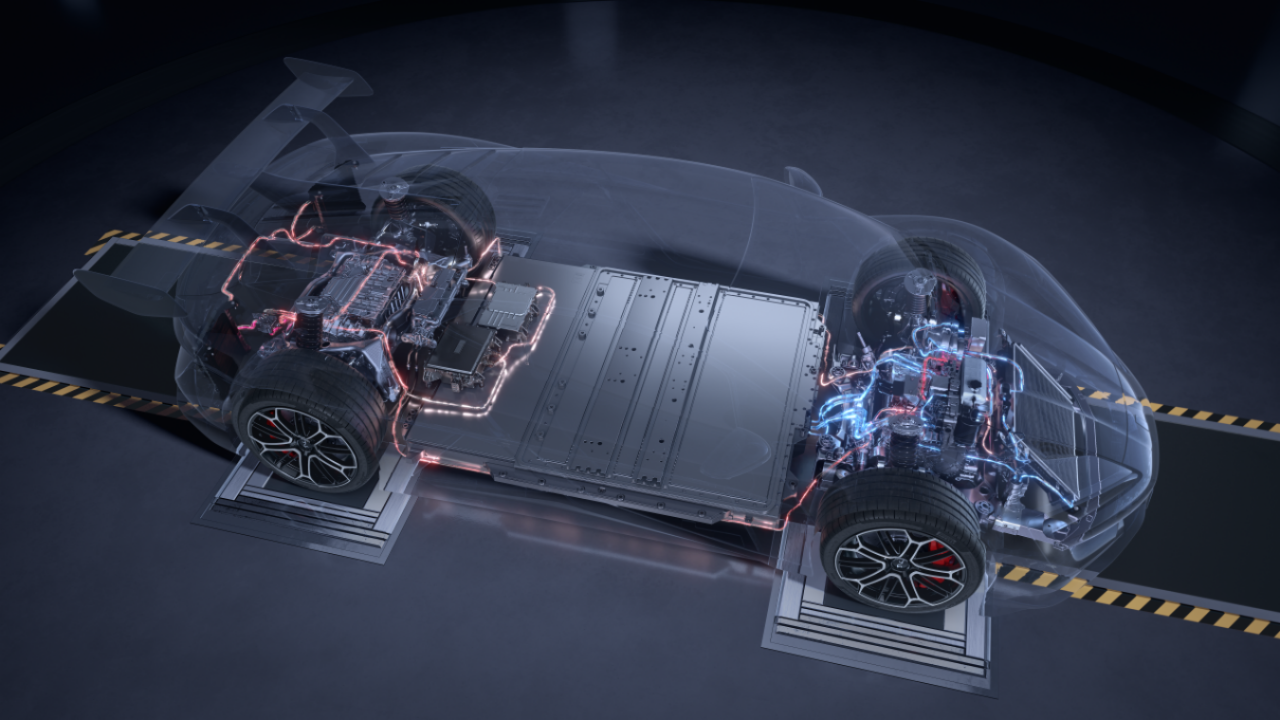
Photo credit: YANGWANG
Recently, the YANGWANG U9 began testing on the Nürburgring Nordschleife and participated in the iconic hill climb at the 2024 Goodwood Festival of Speed, where it showcased its unique DiSus suspension and on-the-spot U-turn capabilities. In a recent high-speed test, the U9 engineering test car set a new speed record, reaching 375.12 km/h, surpassing its previous track test record.

